Senior Quality Engineer
300+ Senior Quality Engineer Interview Questions and Answers

Asked in Tata Motors

Q. What is the least count of a vernier caliper, micrometer, and height gauge?
The least count of vernier caliper, micrometer, and height gauge varies based on their precision.
Least count of vernier caliper ranges from 0.02 mm to 0.05 mm
Least count of micrometer ranges from 0.001 mm to 0.01 mm
Least count of height gauge ranges from 0.02 mm to 0.05 mm
Least count is the smallest measurement that can be read on the instrument

Asked in Tata Motors

Q. What is the actual process of a Control Plan?
Control plan is a documented procedure to ensure consistent quality of a product or service.
Identify critical process steps and potential failure modes
Develop controls to prevent or detect failures
Assign responsibility for each control
Establish monitoring and response plans
Review and update the control plan regularly
Senior Quality Engineer Interview Questions and Answers for Freshers

Asked in Accenture

Q. 1. What is the difference between find elements and find element in selenium 2. Oops concept and where you have applied this concept in your framework 3. Explain the framework you are using 4. How to generate t...
read moreInterview questions for Senior Quality Engineer position
findElements returns a list of web elements while findElement returns a single web element
OOPS concepts include inheritance, polymorphism, encapsulation, and abstraction
TestNG framework allows for easy test case management and reporting
Reports in TestNG can be generated using the TestNG XML file or by using listeners
Defect life cycle includes identification, logging, prioritization, fixing, and verification
Priority and s...read more

Asked in Tata Motors

Q. What is PPAP?Which characteristics use in this?
PPAP stands for Production Part Approval Process. It is a standardized process used in the automotive industry to ensure that suppliers meet quality requirements.
PPAP is a set of guidelines and requirements that suppliers must follow to demonstrate their ability to consistently produce parts that meet customer specifications.
It involves submitting documentation and samples to the customer for approval before production begins.
The documentation includes items such as control p...read more

Asked in Tata Motors

Q. What is quality control and quality assurance?
Quality control and quality assurance are two essential processes in ensuring the quality of products or services.
Quality control involves the activities and techniques used to monitor and control the quality of a product or service during production or delivery.
Quality assurance focuses on the processes and systems implemented to ensure that the product or service meets the required quality standards.
Quality control is reactive and aims to identify and correct defects or dev...read more

Asked in NKG Infrastructure

Q. 1.) What is the meaning of QA/QC ????? 2) Knowledge of concrete . 3) Chemical and physical test of Cement. 4) All testing of coarse and fine Aggregate. 5) Chemical and physical properties of TMT Bar (8mm to 40m...
read moreQA/QC stands for Quality Assurance/Quality Control. It involves testing and inspection of materials and products to ensure they meet quality standards.
QA/QC is a process of ensuring quality in products and materials
It involves testing and inspection of materials and products
Concrete, cement, aggregates, TMT bars, and soil are some of the materials that require QA/QC
Knowledge of chemical and physical properties of these materials is necessary
Mix design of concrete as per IS Co...read more
Senior Quality Engineer Jobs
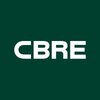
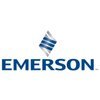

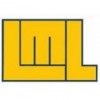
Asked in Lokesh Machines

Q. What is the difference between accuracy and precision?
Accuracy refers to how close a measured value is to the true value, while precision refers to how close multiple measurements are to each other.
Accuracy is the degree of closeness between a measured value and the true value.
Precision is the degree of closeness between multiple measurements of the same quantity.
Accuracy is related to systematic errors, while precision is related to random errors.
Accuracy can be affected by bias, while precision can be affected by variability.
A...read more
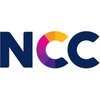
Asked in Nagarjuna Construction Company

Q. How to place bottom and top steel in staircase. How to check reinforcement and shuttering in slab & column. Density of raw material Testing of steel, soil, raw material. Concrete design mix, Etc
Placing bottom and top steel in staircase involves proper measurement and positioning. Checking reinforcement and shuttering in slab & column requires attention to detail. Density of raw material can be determined through testing. Testing of steel, soil, and raw material is crucial for quality assurance. Concrete design mix should be carefully calculated.
Measure and position bottom and top steel in staircase accurately
Pay attention to detail when checking reinforcement and sh...read more
Share interview questions and help millions of jobseekers 🌟


Asked in Tata Electronics

Q. What is 8d,fmea, ppap,SPC,msa and your department related questions
These are quality control methodologies used in manufacturing processes.
8D is an eight-step problem-solving process used to identify, correct, and prevent problems
FMEA is a risk assessment tool used to identify and prioritize potential failures in a process
PPAP is a process used to ensure that suppliers have met all customer requirements before production begins
SPC is a statistical process control method used to monitor and control a process
MSA is a measurement system analysi...read more

Asked in L&T Technology Services

Q. What is the Failure Modes and Effects Analysis (FMEA) process?
FMEA is a systematic method for identifying and prioritizing potential failure modes in a process or product.
FMEA involves identifying potential failure modes, their causes, and the effects of these failures.
It assigns a severity, occurrence, and detection rating to each failure mode to prioritize them for mitigation.
FMEA helps in proactively addressing potential issues to improve quality and reliability.
Example: In automotive manufacturing, FMEA can be used to identify poten...read more
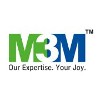
Asked in M3M India

Q. What is snagging, What points check in snagging as a quality engineer
Snagging is the process of identifying and rectifying defects or issues in a construction project before completion.
Inspecting the construction site for any defects or issues
Checking for quality of materials used
Ensuring compliance with building codes and regulations
Creating a snagging report detailing all identified issues
Coordinating with contractors to address and rectify the snagged items

Asked in Vectus Industries

Q. 3. Do u have Experience in ISO standards and 5S and KAIZEN How's much experience u have ?
Yes, I have experience in ISO standards, 5S, and Kaizen.
I have worked with ISO 9001 and ISO 13485 standards in my previous roles.
I have implemented 5S methodology in a manufacturing plant, resulting in improved efficiency and reduced waste.
I have led Kaizen events to identify and eliminate process inefficiencies.
Overall, I have 5 years of experience in these areas.
Asked in Vigel Manufacturing Technologies

Q. How many Datums are present in the current drawing in front of you?
There are 3 Datums present in the current drawing.
Datum A: Position of a hole
Datum B: Orientation of a surface
Datum C: Reference point for measurements
Asked in Vigel Manufacturing Technologies

Q. How would you check the flatness of a large rectangular conference table without using a CMM?
Use straight edge and feeler gauge to check flatness of the table.
Use a straight edge to check for any gaps between the table surface and the straight edge.
Use a feeler gauge to measure any deviations from flatness at various points on the table.
Repeat the process in multiple directions to ensure overall flatness of the table.
Document the measurements and compare them against the acceptable flatness tolerance for the table.
Asked in Vigel Manufacturing Technologies

Q. How would you verify the accuracy of CMM readings?
To verify the accuracy of CMM readings, I would use calibration standards, conduct repeatability tests, and compare results with known measurements.
Use calibration standards to verify the accuracy of CMM readings.
Conduct repeatability tests to ensure consistent results.
Compare CMM measurements with known measurements to validate accuracy.
Asked in Vigel Manufacturing Technologies

Q. Is this possible to check the flatness of this big round conference table?
Yes, it is possible to check the flatness of a big round conference table.
Use a straight edge or level to check for any deviations from flatness
Measure the distance between the table surface and the straight edge at multiple points
Look for any gaps or unevenness in the measurements
Consider using a laser level for more accurate results
Asked in Vigel Manufacturing Technologies

Q. Which alignment are you using to align the job on CMM?
I am using the Datum Reference Frame alignment method to align the job on CMM.
Datum Reference Frame alignment method is commonly used in CMM to establish a coordinate system based on specific datums on the part.
This method involves selecting primary, secondary, and tertiary datums to align the part in the correct orientation.
The alignment process ensures accurate measurement and inspection of the part's features.
Examples of datums include flat surfaces, holes, or edges that a...read more
Asked in Vigel Manufacturing Technologies

Q. Without a Coordinate Measuring Machine (CMM), how would you check the parallelism and perpendicularity of a conference table?
Using precision measuring tools like calipers, levels, and squares to check parallelity & perpendicularity of conference table.
Use a precision level to check if the table surface is parallel to the ground
Measure the distance between opposite corners to ensure the table is square
Use a square tool to check the right angles of the table
Calipers can be used to measure the thickness of the table legs for uniformity

Asked in LTIMindtree

Q. What is Requirement and what is requirement traceability matrix
A requirement is a need or expectation from a stakeholder. A requirement traceability matrix is a tool to track requirements throughout the project lifecycle.
Requirement is a statement that specifies what a product or service should do or how it should perform.
Requirement Traceability Matrix (RTM) is a document that links requirements to their origin and traces them throughout the project lifecycle.
RTM helps to ensure that all requirements are met and that changes to requirem...read more
Asked in Vigel Manufacturing Technologies

Q. Are there different types or subtypes of surface finishes? If so, please explain.
Yes, surface finish can have further types or subtypes such as roughness, waviness, and lay.
Surface roughness refers to the finely spaced irregularities on the surface of an object.
Surface waviness refers to the more widely spaced deviations of the surface from a straight line.
Surface lay refers to the direction of the predominant surface pattern.
Asked in Vigel Manufacturing Technologies

Q. Do you know about surface finish? If so, please explain.
Surface finish refers to the texture or smoothness of a surface after it has been machined or treated.
Surface finish is measured in units such as Ra (roughness average) or Rz (average maximum profile height).
A smooth surface finish is important for reducing friction, improving aesthetics, and ensuring proper functionality.
Common methods for achieving desired surface finishes include grinding, polishing, and coating.
Surface finish can impact the performance and longevity of a ...read more

Asked in Qualitest

Q. What all types of testing you have done?Testcases in helmet?so many….
I have experience in various types of testing including functional, regression, performance, and security testing.
Functional testing to ensure the product meets the specified requirements
Regression testing to ensure new changes do not affect existing functionality
Performance testing to ensure the product can handle expected load and response times
Security testing to identify and mitigate potential vulnerabilities
Testcases in helmet for impact resistance, durability, and comfo...read more
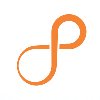
Asked in Persistent Systems

Q. How do you conduct API testing, and what do the following status codes represent in that context: 200, 201, 404, and 501?
API testing involves validating the functionality, reliability, and performance of APIs using various status codes.
Use tools like Postman or SoapUI for manual testing and automation frameworks like RestAssured for automated tests.
Status code 200 indicates a successful request, e.g., retrieving user data.
Status code 201 means a resource was successfully created, e.g., adding a new user.
Status code 404 indicates that the requested resource was not found, e.g., accessing a non-e...read more
Asked in Vigel Manufacturing Technologies

Q. Which CMM machines and related software have you used?
I have experience using a Zeiss CMM machine with Calypso software.
Used Zeiss CMM machine for precision measurements
Proficient in operating Calypso software for data analysis
Performed dimensional inspections using CMM technology

Q. When calculating Process Performance (Pp) and Process Capability (Ppk), what are the key considerations?
Key considerations for Pp and Ppk include data distribution, sample size, and specification limits.
Understand the difference: Pp measures potential capability, while Ppk measures actual performance considering process mean.
Ensure data is normally distributed; if not, consider transformations or non-parametric methods.
Sample size matters: larger samples provide more reliable estimates of process performance.
Specification limits should be clearly defined; Pp and Ppk calculation...read more

Asked in L&T Technology Services

Q. What are the different quality standards that you are aware of?
Some quality standards include ISO 9001, Six Sigma, Lean Manufacturing, and Total Quality Management.
ISO 9001: a set of international standards for quality management systems
Six Sigma: a methodology aimed at improving processes by reducing defects
Lean Manufacturing: focuses on minimizing waste and maximizing value
Total Quality Management: an approach that involves all employees in continuous improvement

Asked in LTIMindtree

Q. How to handle dropdown in selenium? Expalin diff betn abstarct class & interface?
To handle dropdown in Selenium, we can use the Select class and its methods like selectByVisibleText, selectByValue, and selectByIndex.
Create an instance of the Select class by passing the dropdown element as a parameter
Use selectByVisibleText method to select an option by its visible text
Use selectByValue method to select an option by its value attribute
Use selectByIndex method to select an option by its index
To deselect an option, use deselectAll or deselectBy methods
Asked in Vigel Manufacturing Technologies

Q. Is it possible to make changes in alignment as per requirements? If yes, how would you implement those changes?
Yes, changes in alignment can be made based on requirements through various methods and tools.
Identify the specific alignment requirements through stakeholder discussions.
Utilize tools like Six Sigma or Lean methodologies to assess current alignment.
Implement changes using software tools for automated testing to ensure quality.
Conduct regular reviews and audits to ensure alignment meets evolving requirements.
Example: Adjusting test cases in response to new regulatory standard...read more
Asked in Vigel Manufacturing Technologies

Q. How would you rate your ability to read and understand engineering drawings?
I have a strong engineering drawing reading and understanding level.
I have extensive experience in interpreting complex engineering drawings and schematics.
I am proficient in understanding geometric dimensioning and tolerancing (GD&T) symbols.
I have successfully collaborated with design teams to ensure accurate interpretation of drawings.
I have a keen eye for detail and can identify potential issues or discrepancies in drawings.
I am familiar with industry standards and best p...read more

Asked in Kiswok Industries

Q. What is your knowledge of control plans and Failure Mode and Effects Analysis (FMEA)?
Control plans and FMEA are tools used in quality engineering to identify and prevent potential failures in processes.
Control plans outline the key steps in a process, the controls in place to ensure quality, and the responsible parties.
FMEA is a systematic approach to identifying potential failure modes in a process, assessing their impact, and developing mitigation strategies.
Both control plans and FMEA are essential tools in quality engineering to proactively address potent...read more
Interview Questions of Similar Designations
Interview Experiences of Popular Companies








Reviews
Interviews
Salaries
Users

















